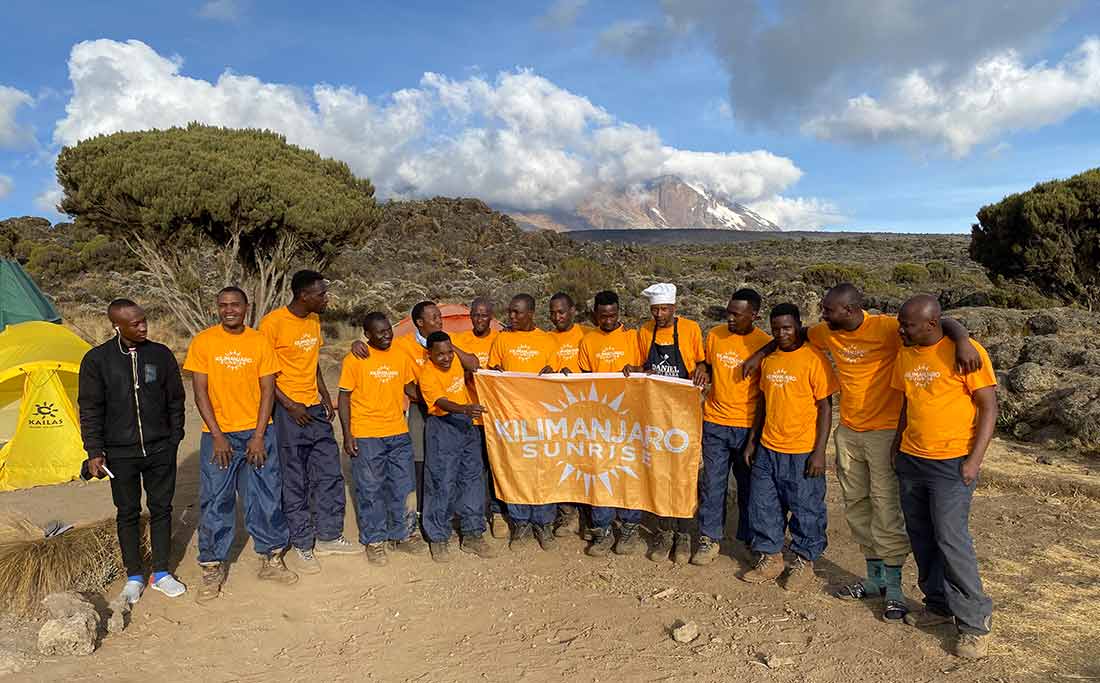Many people choose to climb Mount Kilimanjaro because it is one of the Seven Summits, the tallest mountain in Africa, and the tallest free-standing mountain in the world. Many also see images on social media and want to climb Kilimanjaro. Others are peak baggers or just love traveling and hiking. Whatever your motivation, the following is part one of Things I Wish I Knew Before Climbing Kilimanjaro.
After my second climb of Kilimanjaro, there are some items I feel need to be addressed for those first-time climbers.
The difference between the first time I climbed and the second was significant. The first time was good, but I really had no time to prepare and didn’t know what to expect. I am an avid outdoorsman. I felt I was prepared since have done multi-day backpacks and canyoneering and pack rafting trips. However, the second time I knew what was in store for me and came prepared. I put in a lot of hiking miles before I went and had all the essentials for the trip. I even brought some “luxury” items that I didn’t bring the first time such as camp slippers. You can see the other items here: https://kilimanjarosunrise.com/five-must-have-items-for-kilimanjaro/
So what are some nuggets of wisdom I can pass along to anyone who hasn’t climbed Kilimanjaro? Keep reading to find out.
The Climb Isn’t Technical
Yes, we say, climb Kilimanjaro, but you don’t do any rock climbing or mountaineering. Ropes are not involved. If you are an avid hiker, the hike isn’t that aggressive. If it was at sea level, the difficulty would be a 1 out of 5. Of course, the elevation makes it difficult, but there are things you can do to minimize the effect of the altitude.
Read more here: https://kilimanjarosunrise.com/ways-to-prevent-altitude-sickness-on-kilimanjaro/
So how difficult is climbing Mount Kilimanjaro? Climbing Kilimanjaro does require a high level of physical endurance and mental strength. However, it is attainable for climbers from ages 14 to 70+ years old. With a few months of training, most people can scale the highest summit in Africa.
Conversely, the other six summits located in North America, Asia, South America, Europe, Oceania, and Antarctica are very technical climbs that need a lot of training and preparation. You can read more about those here: https://kilimanjarosunrise.com/seven-summits-highest-peaks-on-each-continent/
Read the Gear List and Pack Accordingly
Having the right equipment and clothing is essential when climbing Kilimanjaro. Additionally, when you are in camp you won’t have any electricity, so it is important to prepare for low-light situations. Make sure you bring either a rechargeable headlamp and power bank/solar panel or a battery-operated one with extra batteries. It can be very difficult if you don’t have a headlamp or other way to light up the path in front of you. Make sure you have a fresh set of batteries for summit night since you’ll be hiking in the dark for several hours.
Prepare for Cold & Wet
Although Kilimanjaro is in Africa and is located on the Equator—it is cold no matter what elevation you are at. It is a very high mountain and can create its own weather pattern. So you’ll need to be prepared for several types of weather. These can be rain, snow, heat, cold, and wind. These can occur at any elevation and rain and snow are more likely during the rainy season. For this reason, we recommend climbing during the dry seasons. The dry seasons are June-October and December-Mid-March. Even then, there is a good chance of rain each day. So be prepared and dress in layers.
Prepare for the cold. Pack thick socks, an extra layer of thermals, a fleece top, and a warm hat. You’ll probably still wish you had more clothing. Read more here: https://kilimanjarosunrise.com/what-to-wear-on-kilimanjaro/
Additionally, the mountain crew that accompanies you on the climb is there to help you and will carry your gear. You should rely on your team members with their mountain expertise and equipment.
Tipping
In many countries tipping is considered nice, but not necessarily a common practice. When hiking Kilimanjaro, tipping is different. The crew that takes you up the mountain consists of a lead guide, assistant guide(s), chef, and a team of porters. Your Kilimanjaro Mountain crew plays a huge role in the success of your summit. They make sure that you know what is required to safely make the summit. The guides will let you know what time to eat when to sleep, and how much you’ll climb each day. They will also tell you how much water to pack and drink each day. They will also monitor your health during the daily health checks.
It is common for people to ask, How much do I tip my guide and porters on Kilimanjaro? Whatever you decide to tip—with everything they do—you’ll probably feel it isn’t enough.
If you don’t know the size of your group, you can use this KPAP guideline to decide how much to tip:
- Guide: $25 per day
- Assistant Guide: $25 per day
- Cook: $15 per day
- Summit Porter $15 per day
- Porter: $10 per day
Your mountain crew will gather together at the end of your climb for a tipping ceremony. They will perform local songs and dances. One person from your group will tell how much you are tipping each person to keep them honest. Tipping guides and porters on Kilimanjaro is important. You are helping their families and local communities with your tip.
Having a successful experience and summit on Kilimanjaro is very possible and comes down to three things: Training for Mount Kilimanjaro, packing the right gear for Kilimanjaro, and trusting in your mountain crew.
This is part one of the Things I Wish I Knew Before Climbing Kilimanjaro. You can read Part 2 here, and Part 3 here.






